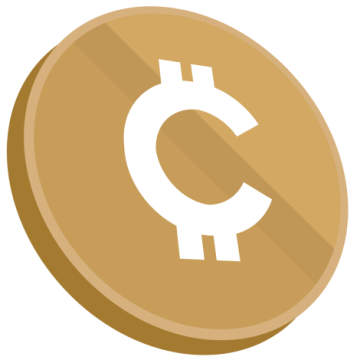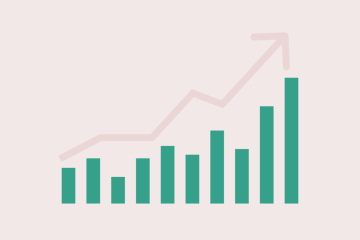
Demystifying cross-border payments: challenges and new trends
Cross-border payments are booming — but they’re usually slow and costly. Here, digital finance expert Xavier Lavayssière covers the new trends that forecast a bright future for international payments.
6 min read
When you pay for a cup of coffee in Bolivia, you trigger an international chain reaction. The operation may appear seamless to you, but underneath, money flows from your bank account, is converted in international markets into the local Boliviano currency, and finally lands in the account of that delightful coffee shop in La Paz. Your money may travel for longer than you do.Overall, cross-border payments are a vital element of global commerce and finance, representing trillions of dollars each year. This sector is booming, with double-digit growth, particularly driven by the development of e-commerce and international travel.However, cross-border transactions remain slow, opaque, and expensive. These issues are so important that, in 2020, the world's major economies made enhancing cross-border payments a priority of the G20. They set a list of targets aimed at ensuring low cost, transparency, access, and speed. However, despite these efforts and new offerings, the results are still not satisfactory.In this post, I’ll explore the high-level choices available for cross-border payments, explain their functioning, and anticipate their evolution.Cross-border payments are financial transactions between parties based in different countries. The payer and the payee may be temporarily located in the same country — like in our coffee shop example from La Paz — but the money will cross international borders or be converted between two currencies.1. Retail payments: These are common transactions. For example, you buy a handmade bag from a small business in Morocco through their website, or you book a boat ticket to travel between islands in Greece. Retail payments also include some business-to-business operations.2. Wholesale payments: These are large transactions, mostly occurring among financial institutions, large companies, or governments — for instance, when a country receives foreign financial aid. 3. Remittances: These are donations, mostly migrant workers sending money back to their families. Remittances typically flow from richer countries to emerging economies. In terms of volume, the largest recipients are India, Mexico, and China. However, remittances represent a larger percentage of the Gross Domestic Product (GDP) of countries like Tajikistan, Tonga, Samoa, Lebanon, and Nicaragua.For most customers who already have a bank account, the easiest way to pay abroad is probably to use a credit or debit card. Visa and Mastercard can be used almost anywhere globally, although not all businesses accept them. These cards enable a payment between your bank account and the business’ bank account. They're simple to use, but, as we'll see, the process is quite complex behind the scenes.You could also use wire transfers or remittance networks. With these methods, you use an online interface or a local shop to initiate the money transfer. At the receiving end, the money can be deposited into a bank account or collected directly as cash. Western Union and MoneyGram have established large networks globally. However, the cost of transfers between some countries (known as "corridors") varies and can be extremely expensive. For example, sending $200 from the United States to Nigeria can cost less than $4 in fees, while the same amount from Japan to India could cost over $20.Digital wallets and fintech offerings now allow you to make cross-border payments more easily. WeChat and Alipay have been particularly successful in China and neighboring countries. Their success relies on more competitive approaches to interfaces and price. Similarly, fast payment systems across Southeast Asia now offer smooth and fast cross-border payments. Examples include the collaboration between Singapore's PayNow and Thailand's PromptPay, which allows users to send money between the two countries using just a mobile number or a QR code. A more recent option involves cryptocurrencies and, in particular, stablecoins. For instance, a freelancer in Argentina could receive payment in a USD-pegged stablecoin. While cryptocurrencies are not yet very convenient to use, stablecoins could serve well for large transactions and potentially support new retail experiences in the future. Moreover, their development accompanies the broader development of the tokenization of financial assets.
An important question is the choice of currency. As a consumer, you may want to use your home currency, while the business may prefer to be paid in their local currency. You can usually select your preference when paying. For businesses, the choice is more strategic. For example, a cloth manufacturer in Vietnam may want to be paid in the same currency they use to import fabric.As a result, most international transactions are currently conducted in dollars. The U.S. dollar serves as a pivot currency, because it’s convenient for foreign exchange and considered a safe value store for most parties involved. The euro, despite being stable, has never assumed a role of this scale. Due to the geopolitical situations, other currencies, such as the Canadian dollar, the Chinese renminbi, and the Australian dollar, are modestly picking up some of this international role.Think of cross-border payments as a relay race. When you pay with a card or initiate a wire transfer, money is first drawn from your bank account. Then, if your bank has a relationship with the other party’s bank, all it takes is a simple message, mostly using the SWIFT network. This is called "correspondent banking." However, in many cases, the bank will first have to go through a series of hops nationally to find a bank that has a link with the payee's country, and then another series of hops on the other side. Moreover, as some countries aren't well-connected to the rest of the world financially, there may not be any network of relationships between the two banks. As a result, the process can be slow. Additionally, limited working hours, compatibility issues, and messaging systems can cause delays. An interesting fact is that a payment that "follows the sun," moving from east to west, is usually faster than a payment that moves in the opposite direction. For example, a transfer from Shanghai to London might be quicker than one from London to Shanghai. In the middle of this process, there may be a currency conversion. This is often the most expensive part. One of the banks will convert the money from one currency to another, charging a fee and not necessarily using the best exchange rates.Finally, at the recipient bank, moving the money to the final account is often the longest step. This delay is partly due to compliance checks. Financial institutions have to verify that the transaction isn't sent to a sanctioned individual or a terrorist organization and that the payment isn't used for illegal activities such as drug trafficking. Navigating different regulatory environments and ensuring compliance with anti-money laundering (AML) regulations in different jurisdictions adds complexity and cost.Despite geopolitical tensions causing fragmentation, the future of cross-border payments looks bright. As our planet operates as a global economy, international exchanges continue to increase, driving the need for more efficient cross-border payments.To facilitate this evolution, three key developments are on the horizon:
N26 offers a simplified and stress-free way of managing your money. Understand your spending habits with Insights and get a monthly snapshot of your financial health with your Monthly Wrap-Up, helping you to stay on budget. Plus, you can easily start setting aside money with N26 Spaces to help you reach your short- and long-term financial goals. Find the right account for you.
What are cross-border payments?
The three main categories of cross-border payments
How can you make a cross-border payment?
Card payments
Wire transfers
Digital wallets
Cryptocurrencies
Which currency is best for cross-border payments?
Cross-border payments: a behind-the-scenes look
The future of cross-border payments
- On the technical side, standardization and improved infrastructure provide the rails. Standards like ISO 20022 provide a common language, while projects such as mBridge create shared and programmable platforms.
- Efforts to simplify regulatory procedures are aiming to reduce costs and processing times. Solutions include better guidelines, cooperation between regulators, digital identity, and the use of AI.
- Healthy competition and transparency regarding fees and delays could provide better choices to consumers and businesses.
Your money at N26
Find similar stories
BY XAVIER LAVAYSSIÈREExpert in digital finance, advising governments and central banks on financial infrastructures and technology policies.
Related Post
These might also interest youBANKING BASICSDear Money: an exercise for rewriting your financial scriptsWhether you feel stuck, anxious, or ready to make a change, writing a letter to money can help you reflect on and reset your financial mindset.
5 min read
INVESTBear market: This is what it meansIf you think a bear market sounds rather scary, you’re already on the right track. In this article, you’ll learn what a bear market is, why it occurs, how it affects your assets and how long it lasts.
11 min read
INVESTBull markets: What they mean for your moneyNot sure what bulls have to do with the financial world? The term is mostly symbolic — but bull markets can have significant effects on your investments. Read on to learn what a bull market is.
10 min read



